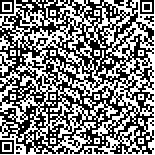| 摘要: |
| 针对目前城市绿地量化评估体系当
中缺乏公平性评估方法的现状,借鉴经济学
领域的基尼系数概念,探索了以住宅小区公
园可达性为基础的城市公园绿地空间布局公
平性量化评估的技术方法。以北京为案例,
构建GIS网络数据集定量分析了六环区域内
的10 244个住宅小区的公园可达性指数。结
果显示二、三环间的南部区域由于住宅小区
密度较高,公园绿地可达性指数较低;五环
外区域由于开发程度较低,公共服务设施不
足,绿地可达性指数也较低。利用洛伦兹曲
线计算得出六环区域住宅小区的城市公园可达性基尼系数为0.269,参照经济收入的常用标准,此系数处于合理偏高的范围。研究结果丰富
了我国城市绿地量化评估体系,为公平目标的城市规划和建设提供有益参考。 |
| 关键词: 公平性评估 可达性 城市绿地 公园 北京 |
| DOI:10.13791/j.cnki.hsfwest.20200512 |
| 分类号: |
| 基金项目:国家自然科学基金项目(52008016);北京市人文
社科基金项目(19GLC065);住房城乡建设部科
学技术计划与北京未来城市设计高精尖创新中心开
放课题(UDC2017032622);北京建筑大学教育科
学研究项目(Y1824);中国建设教育协会教育教学
科研一般课题(2019016 |
|
| Quantitative Equity Evaluation of Urban Park Spatial Distribution: A Case of Parks Withinthe Sixth Ring Road of Beijing |
|
SUN Zhe,A Latai,ZHANG Xun
|
| Abstract: |
| As the important resource for residents to enjoy recreational services, urban
green space is related to the function of urban landscape ecosystem service and the people’s
quality of life, and thus it is of great significance to urban development. During the process
of urbanization in recent years, the area of urban green space in China has increased
significantly, from 1.32 million hectares in 2004 to 2.67 million hectares in 2015. However,
along with the gradual expansion of urban green space, population amount is also growing
rapidly, as a result, spatial mismatch between green spaces and urban residents often occur in
the process of dynamic changes. This leads to unequal distribution of green space resources
in the city, and becomes the focus of equity appeal in the process of urban environmental
interest redistribution. As the basis of urban green space planning and construction, its
quantitative equity evaluation is of great value to improve the theoretical and empirical
aspects of urban green space planning. Existing literatures seldom discusses the related
topics, so it is urgent to put forward more in-depth, full and comprehensive quantitative
equity evaluation theory and method of urban green spaces.
This paper introduces Gini coefficient method into urban green spaces equity evaluation
system, and explores the specific technique based on the urban park accessibility of residential
communities. Quantitative evaluation of urban green space equity is an important means to
understand the provision characteristics of green space, and is also an important basis for
guiding urban green space planning as well as related policy making. Area within the Sixth
Ring Road of Beijing is selected as the research case, and the road traffic network, urban parks
and residential areas are analyzed to explore the quantitative evaluation method of fairness of
urban park green space layout. Employing GIS network analysis tools, accessibility index to
urban parks of 10 244 residential communities in the Beijing Sixth Ring Road are calculated
based on gravity model, while the index is constructed from area of park space, the distance
between community to park and weighting factor from gravity value. Results show that in the south part between second and third ring road, urban parks resources are relatively insufficient because the density of communities is relatively
high; in outer areas of fifth ring road, urban park accessibility index is relatively low because of less development intensity with lower public
service provision.
Urban park equity degree of residential communities is computed by Lorentz curve, which leads to Gini coefficient. The Gini coefficient of
urban park equity is calculated as 0.269, however, there is no absolute standard of Gini coefficient for urban park yet. Referring to the common
standard of economic income equity, the Gini coefficient of urban park of residential communities within the Sixth Ring Road of Beijing is
within a reasonable range.
According to the multi-ring road structure of Beijing, the Sixth Ring Road area is divided into 20 sub-regions by a four-quadrant system and
the ring roads. It can be found that accessibility characteristics of the total 12 sub-regions in the Fourth Ring area with high urban development
degree and large amount are consistent. In most of these sub-regions, since the community density is high, the accessibility shared by a single
community is relatively low, and thus urban park provision within this area gets to an equal but insufficient condition. In the remainder eight sub-
regions outside the Fourth Ring Road with low urban development, accessibility characteristics of urban parks is quite different among different
sub-regions. Sub-regions where main urban parks match appropriate with residential communities get to an equal and sufficient urban park
provision condition; but if urban parks do not match with communities in the sub-region, it will be an unequal provision condition.
In order to solve this equity related problem, suggestions are raised for different areas. Within the highly urbanized inner Fourth Ring Road
area, suitable land could be converted to park through urban renovation works, and thus urban park provision level gets improved. For the outside
Fourth Ring Road area, where urban development degree is low, main method is to improve matching degree between urban parks and residential
communities. In suitable areas near large urban parks, residential communities could be increased, while building new parks at appropriate sizes
in areas with insufficient park provision but high residential community density.
This paper explores a systematic method for quantitative evaluation of urban green space equity, but due to the limited data, it only analyses
and evaluates residential communities within the Sixth Ring Road area of Beijing, and does not make comparison with similar cities. This
study sheds light on the quantitative evaluation system of urban green spaces in China, and provides a useful reference for urban planning and
construction with equity aims. |
| Key words: Equity Evaluation Accessibility Urban Green Spaces Parks Beijing |


